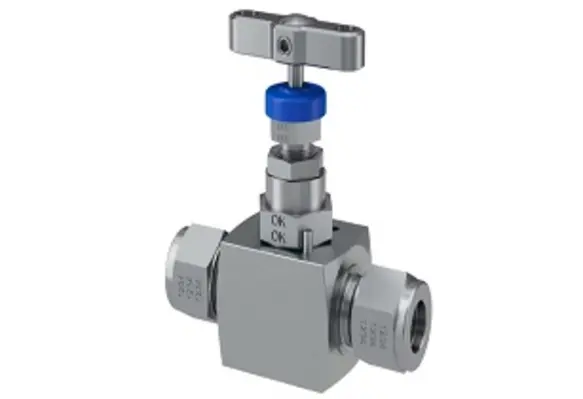Parker Hannifin, the global leader in motion and control technologies, is unveiling a series of valves tested to ISO 15848-1 Class C, a standard that sets out the measurement, test and qualification procedures for fugitive emissions from industrial valves
The Class C valves complement Parker’s existing solutions for the more stringent Class A and B leak rate designations, whilst minimising investment required by the customer.
For companies operating in the chemical, petrochemical or natural gas industries, the reasons for minimising emissions to the atmosphere from industrial valves include environmental targets, government regulations and plant/worker safety. An independent test house witnessed and certified the full factory tests accordingly.
To achieve ISO 15848-1 Class C certification, a valve must demonstrate less than a certain leak rate over a predefined number of operations (cycles). Furthermore, the valve must remain within this limit while enduring predefined temperature fluctuations. Both Parker Hi-Pro ball valves and H series needle valves met the criteria and now carry certification to ISO 15848-1 Class C. The Hi-Pro ball valve successfully completed a test of 205 cycles at a test temperature of -50°C, achieving a stem sealing system leak rate of 1.2 x 10-6 and a test of 205 cycles at a test temperature of +160°C, achieving a stem sealing system leak rate of 1.0 x10-6. The H series needle valve successfully completed a test of 205 cycles at room temperature, achieving a stem sealing system leak rate of 2.0 x10-6. Both valves were tested using Helium as the test media.
Parker’s Hi-Pro high-performance Class C ball valves offer full cold working pressure ratings up to 414 bar, giving 100% bubble-tight shut-off and continuous repeatable performance. Featuring a true two-piece, quality-assured design, body leakage paths are reduced to a minimum. The same quality, reliability and value is available from Parker’s H series Class C needle pattern hand valves, which allow precise flow regulation for a wide variety of media in low-flow applications. As standard, the needle valves have metal-to-metal seats to ensure 100% bubble-tight shut-off.
Both valve series feature fully integrated tube connections utilising either Parker’s superior advantage of proprietary A-LOK (two-ferrule) or CPI (single-ferrule) fitting technologies. This important technical feature not only facilitates rapid installation, but also eliminates the need for taper threads and thread sealant and, in turn, the potential for an external leak path. This can further reduce overall plant emissions.
Another technical feature of the valves that supports ISO 15848-1 Class C accreditation is a robust design of packing around the stem. The stem within industrial valves is a moving part, so a sturdy surrounding sealing concept is critical to prevent leaks during motion, and in enduring the number of cycles and temperature fluctuations set out in the ISO 15848-1 Class C standard.
With this development, process plants, system integrators and natural gas distributors can take advantage of Parker ISO 15848-1 Class C certified ball and needle valves that help to minimise emissions and increase safety.
Learn more about Parker’s low fugitive emissions valves at www.parker.com/ipd









